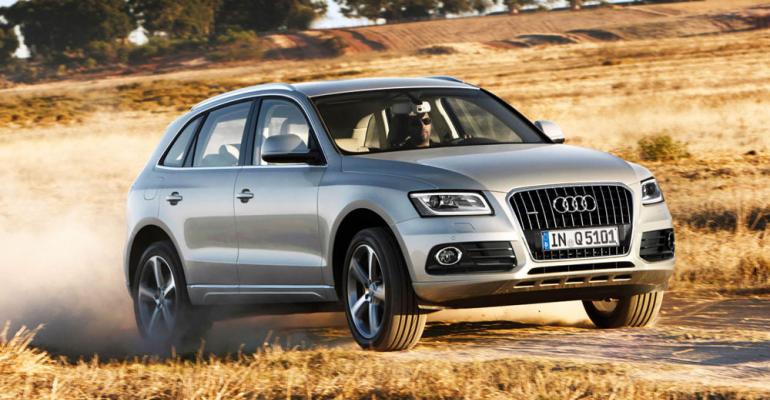A weakened Europe but fast-growing North American market won’t see Audi stray from its game plan in the U.S., where the auto maker is focusing on keeping demand high and supply limited.
Audi sold a record 139,310 vehicles in the U.S. last year, up 18.5% from 2011, and its strong start in January-February, where volume jumped 17.0% from 2012, has officials confident of setting a new high mark this year.
But even though some vehicles are in tight supply, Audi’s top U.S. executive isn’t counting on any serious shifts in allocation that would free up more volume for the market, even with Europe expected to remain mired in an economic funk throughout 2013.
“There’s some (upside) opportunity with Q5s and Q7s,” Audi of America President Scott Keogh says in a conference call with other top executives to discuss the auto maker’s 2013 outlook.
“(But) the business model we have is to have tight supply. That forces the dealers to have high turn rates. And this is a beautiful thing, because dealers aren’t floor-planning these cars (and) their profits are going up.
“It changes the argument when a customer comes into the dealership. It’s ‘When can I get my Audi?’ as opposed to ‘How cheap can I get one of the Audis out there in the parking lot?’ So I think it’s a good thing to be tight on supply.”
Audi had a 35-day inventory of vehicles in the U.S. at the end of February, according to WardsAuto data.
Keogh says Audi’s transaction prices have increased an average $10,000 in the U.S. over the past three years, and he points to dealer investment totaling $600 million as further evidence of the brand’s health and long-range positive outlook.
“It’s not an accident or good fortune,” he says of Audi’s performance. “It’s built on a healthy business model.”
The auto maker is sticking to forecasts of 300,000-unit sales in North America by 2020, when it says one of every seven Audis will be sold in the region.
“If there is additional potential, we would be prepared to take it,” CEO Rupert Stadler says of the 300,000 goal. “Let’s wait and see.”
Executives say a possible Europe-U.S. free-trade agreement wouldn’t necessarily impact that outlook, but it could simplify the business by standardizing some safety and emissions requirements and improve profitability.
Audi’s new plant in San Jose Chiapa, Puebla, Mexico, which will be a global source for Q5 models, will help increase availability of that vehicle in the U.S. when it launches in 2016. Construction is set to begin in May, and training for new workers will begin in Germany later this year.
The Mexican plant “finally will give us production dramatically closer to market,” Keogh says, noting Q5 sales are up 36.1% despite the vehicle being late in its lifecycle. “We can never get enough of this car.”
Expected to boost overall Audi volume this year is the new A3 sedan, which will take its world bow at the Shanghai auto show next month and arrive in the U.S. late in the second quarter. Also set to enter the market later this year is the Q3.
Keogh says the A3 will become the third volume pillar for the brand in the U.S., following the A4 and Q5.
“We think this segment is going to grow,” he says, pointing to the A3’s expected appeal with Audi’s relatively young buyers. “Forty-six percent of our buyers are Gen X and Gen Y. We have a lot of confidence (the A3) will be a home run.”
Audi sold 1.46 million vehicles worldwide in 2012, piling up revenue of €48.8 billion ($63.6 billion), rising 10.6% from 2011. Operating profit, held down due to higher marketing costs in Europe, still rose slightly to a record €5.38 billion ($7.0 billion). The performance means workers in Germany will see profit-sharing checks averaging €8,030 ($10,457).
Last year marked the first in which the auto maker built more vehicles outside of Germany than within, Stadler says, noting Audi’s global capacity expansion will continue with the new plant in Mexico, increasing output in Hungary and two projects planned for China, where the company is targeting capacity for 700,000 vehicles by 2015.
“Our expectation is that China will be the biggest single market in the world,” Stadler says. “We want to be part of that story.”





